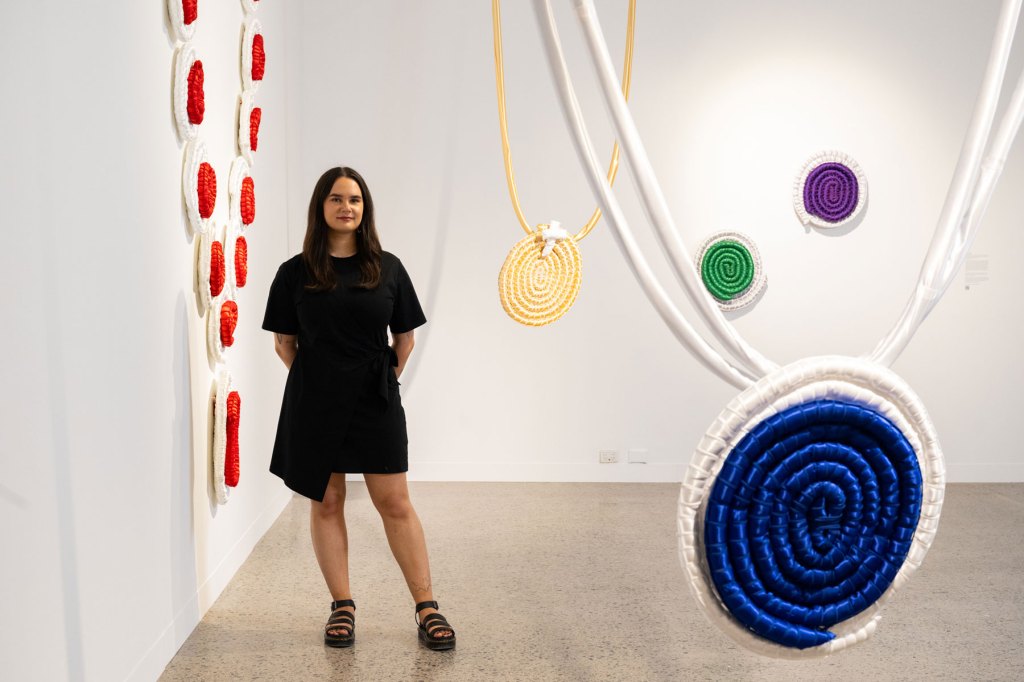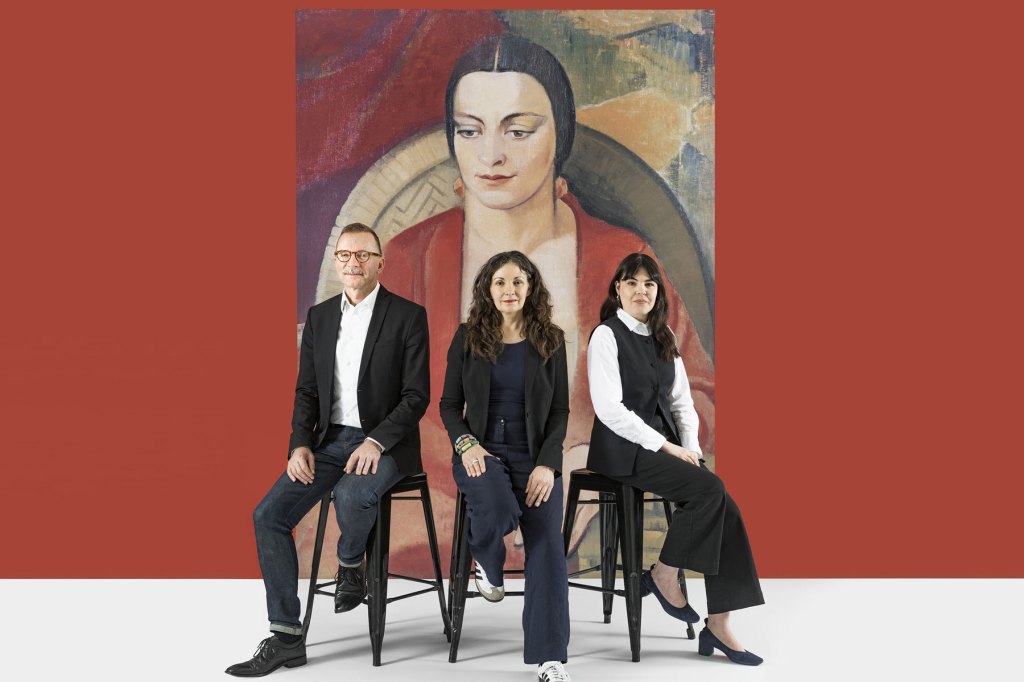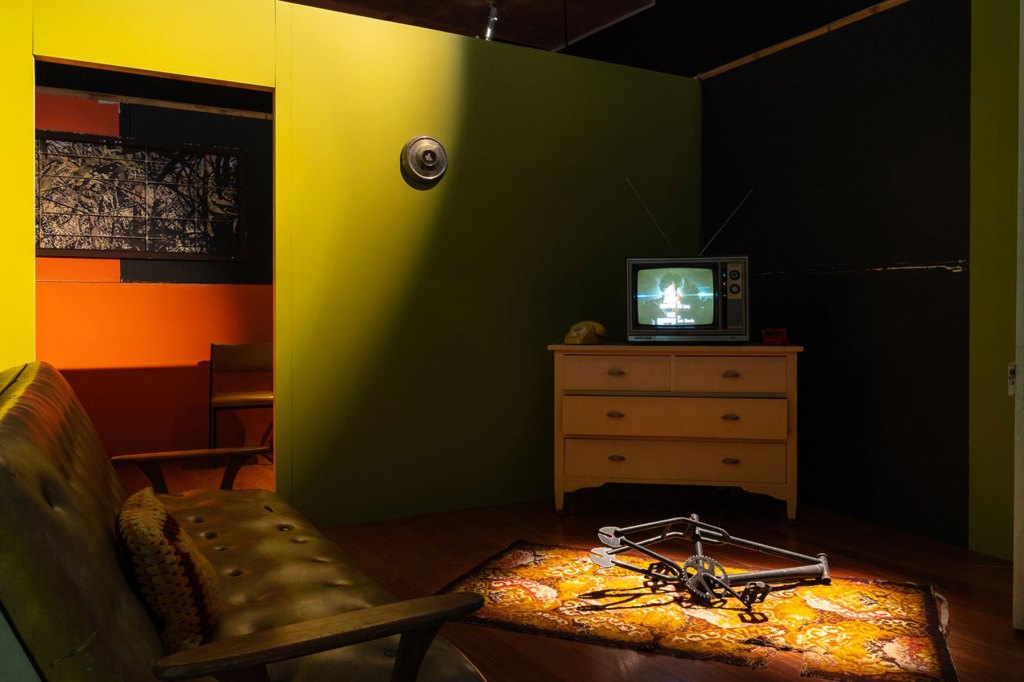ACE’s 2024 studio artists push boundaries in bold end-of-year show
From colourful woven interpretations of the Crown Jewels to an installation inspired by the housing crisis and a hydraulic-powered sculpture representing a womb, this intriguing collection of artworks offers plenty to ponder.

Studios: 2024
Adelaide Contemporary Experimental (ACE)
Studios: 2024 celebrates the end of a productive year for the artists who have been part of ACE’s annual Studio Program. The exhibition invites audiences to engage with the work developed throughout the year and highlights the impact this incredible opportunity has had on the artists’ practices.
There is no theme, allowing each artist to showcase their talent without constraints. And this cohort has not held back, pushing the boundaries with scale, materials and expanded concepts.
Curated by ACE artistic director Danni Zuvela, the group exhibition presents new work by Carly Tarkari Dodd, Abbey Murdoch, Marian Sandberg, Katey Smoker and Emmaline Zanelli.
“This year’s presentation is a sign that we should continue to make the studio program an invitation for artists to expand their practice, expand their scale, but also take their ideas to another level,” says Zuvela.
“Each one is such a good emblem of how to be an artist through just that rigour of the studio practice.”
You might like
Upon entering the exhibition, visitors are immediately struck by the unique offerings and sheer scale of some pieces.
Dodd, who is of Kaurna, Narungga and Ngarrindjeri descent, continues her exploration into the effects of colonisation through her interpretations of the Crown Jewels. Not Your Jewels! features large-scale necklaces made from shiny satin tubes mimicking the sparkling gemstones of the Royal Jewels.
Dodd combines traditional Ngarrindjeri weaving techniques she learnt from renowned weaver Ellen Trevorrow with contemporary practices to create pieces that are both playful and thought-provoking.
Smoker’s presentation, forms of paint, continues her investigations into notions of painting and sculpture through gridded forms made entirely from house paint. Her works are void of a frame or a canvas, shifting the focus to the medium itself, which consists of 100 per cent pure paint.

Katey Smoker’s gridded forms on show in Studios: 2024 are made entirely from house paint. Photo: Sam Roberts
While Dodd scaled up her work, Smoker’s approach was to scale back her display, ensuring that the narrative focuses solely on the paint.
Subscribe for updates
“For one artist, it’s about choosing what is going in the show, and then for another artist it’s about when to stop,” says Zuvela.
“It’s interesting challenges for each artist in that way, and the limitations are unpredictable. Ultimately, it’s not about finding answers to all the questions they’re asking. I feel like all of them love what art is.”
Drawing on personal memories of experiences with low-income housing, Murdoch presents Trust, a thought-provoking installation that combines video with salvaged materials. The work comments on the current housing crisis, featuring a video that shows several empty, boarded-up houses.

Studios: 2024 installation view with Abbey Murdoch’s Trust in the foreground. Photo: Sam Roberts
Murdoch’s work explores the meaning of home and our connection to it. She is particularly interested in the contradictions often associated with public housing: while it can provide a place of safety and refuge, it can also represent abandonment and decay.
One of the most fascinating presentations is Sandberg’s Remote, which delves into what constitutes a work of art. Last year, Sandberg had her uterus removed and created a 3D scan of it. Remote is a re-creation of her uterus created using table legs, detailed crafts, and mechanical and computerised components.
Through her work, Sandberg explores the relationship between technology and reproduction, and what it means to be human in today’s world. The installation is activated by the presence of the audience, which sets off the cycle that causes the sculpture to fill with air and rise and fall through tubes.

Marian Sandberg with her work, Remote, in Studios: 2024. Photo: Morgan Sette
Last, but certainly not least, is Zanelli’s Magic Cave, which consists of a labyrinth of pet enclosures that reach high to the ceiling of the gallery. While the installation is fun and colourful, there is much more going on beneath the surface. The work was inspired by Zanelli’s time spent in Roxby Downs and it encapsulates notions related to the mining industry, particularly the family dynamics in these communities.
Studios: 2024 is an impressive exhibition highlighting some of South Australia’s most promising talent. It demonstrates how providing a creative space and support for early-career artists can help shape their practices and take them to the next level.
Studios: 2024 is at Adelaide Contemporary Experimental until December 14.

Emmaline Zanelli’s colourful Magic Cave. Photo: Morgan Sette

